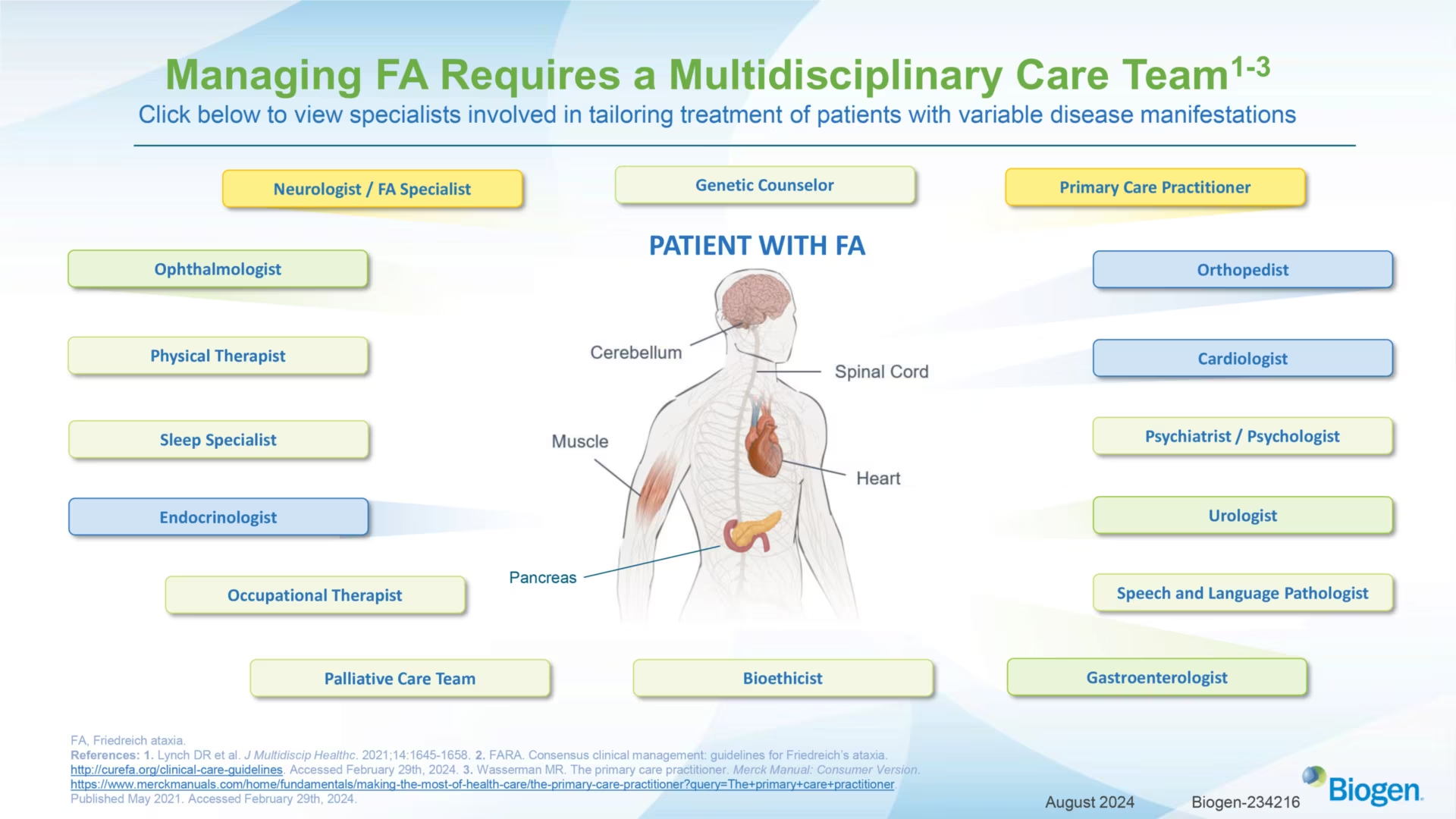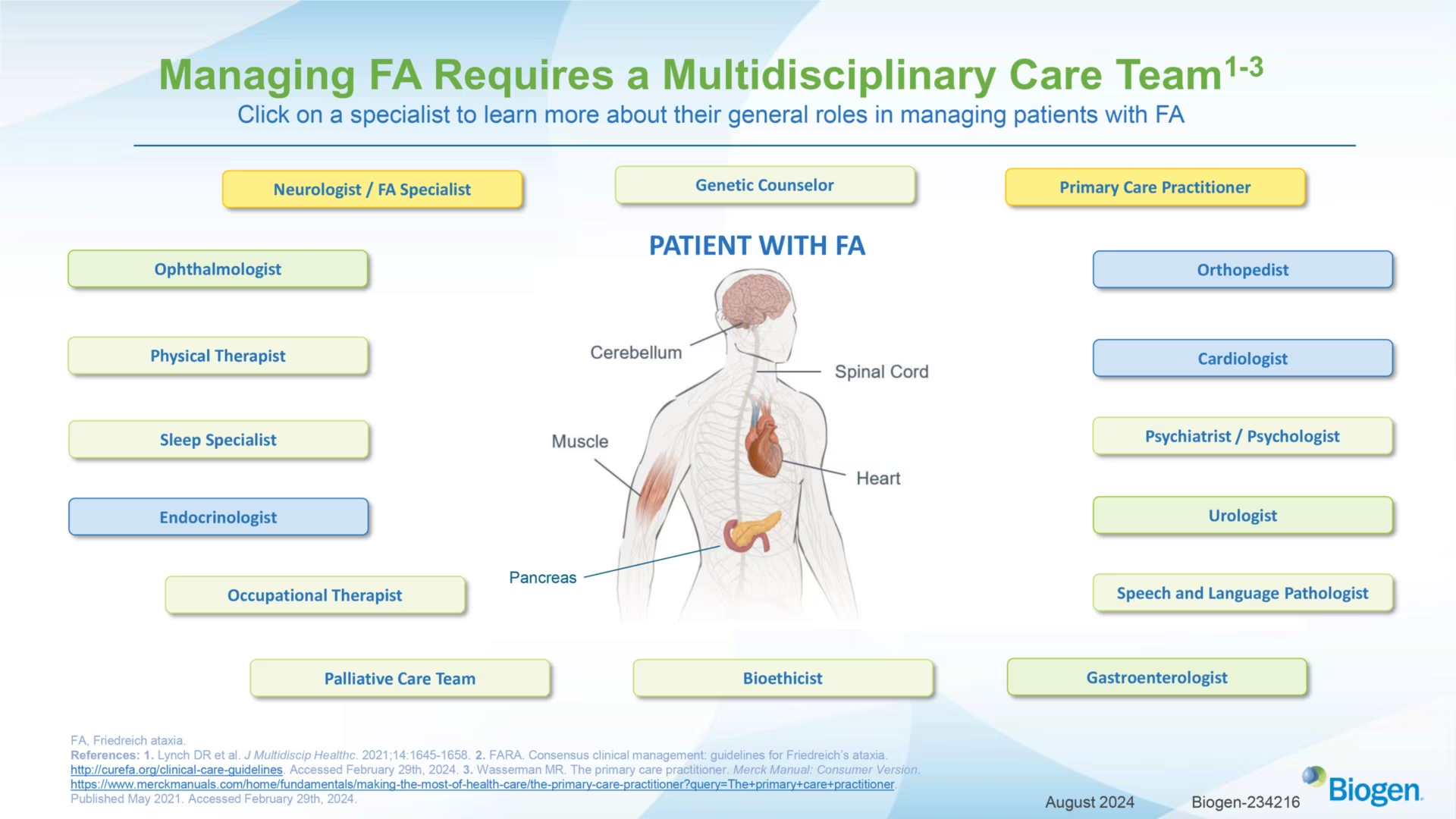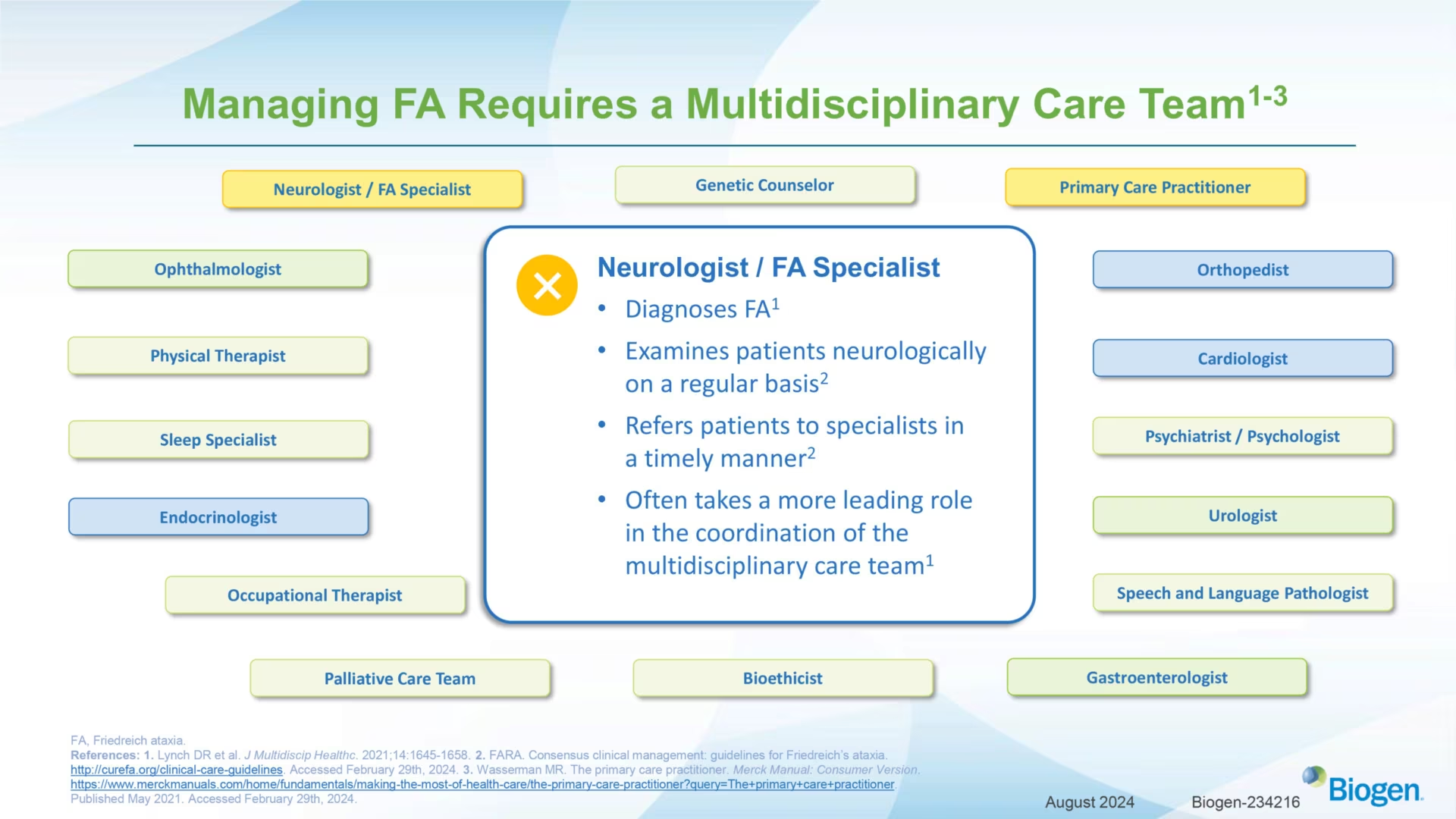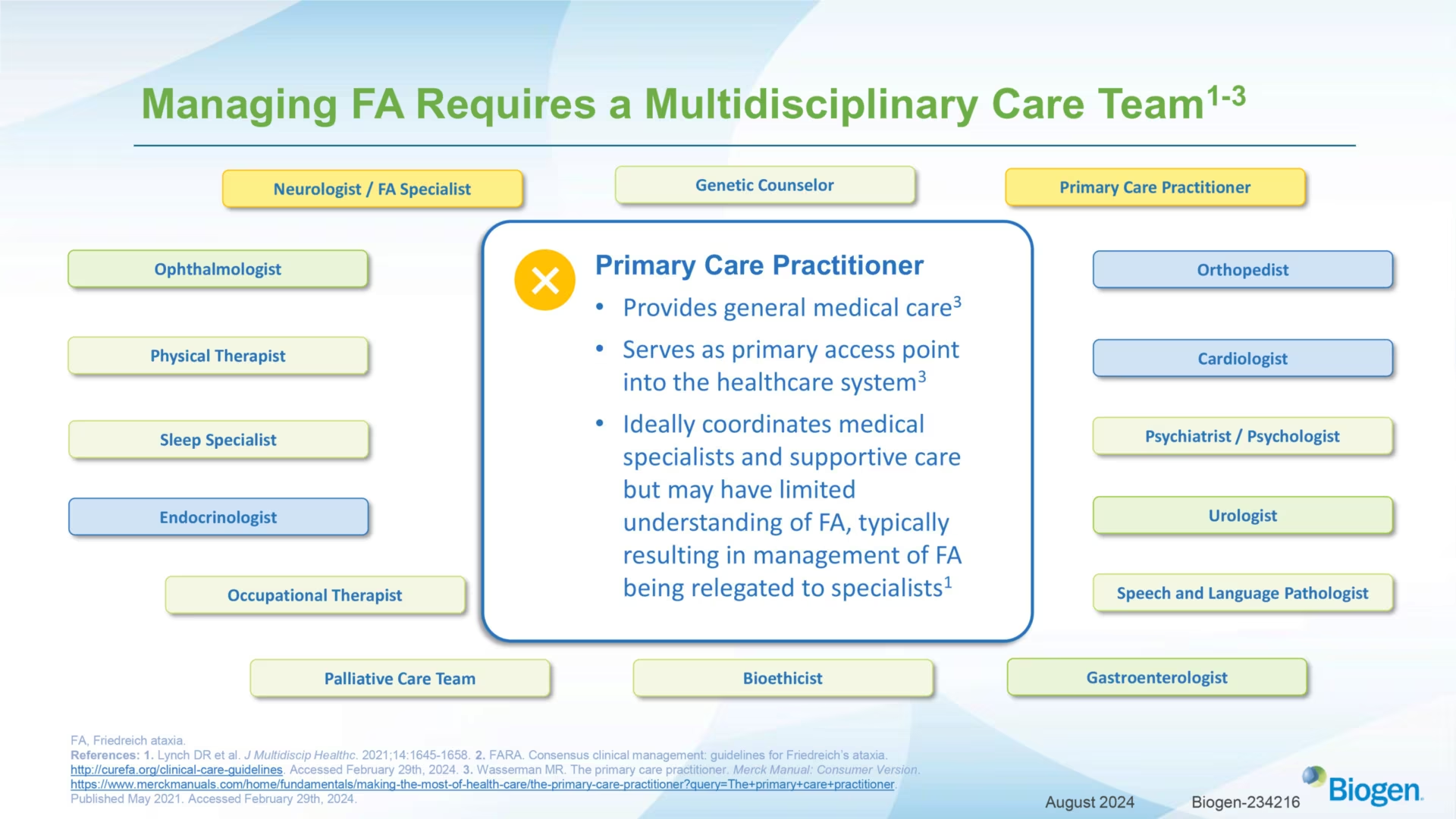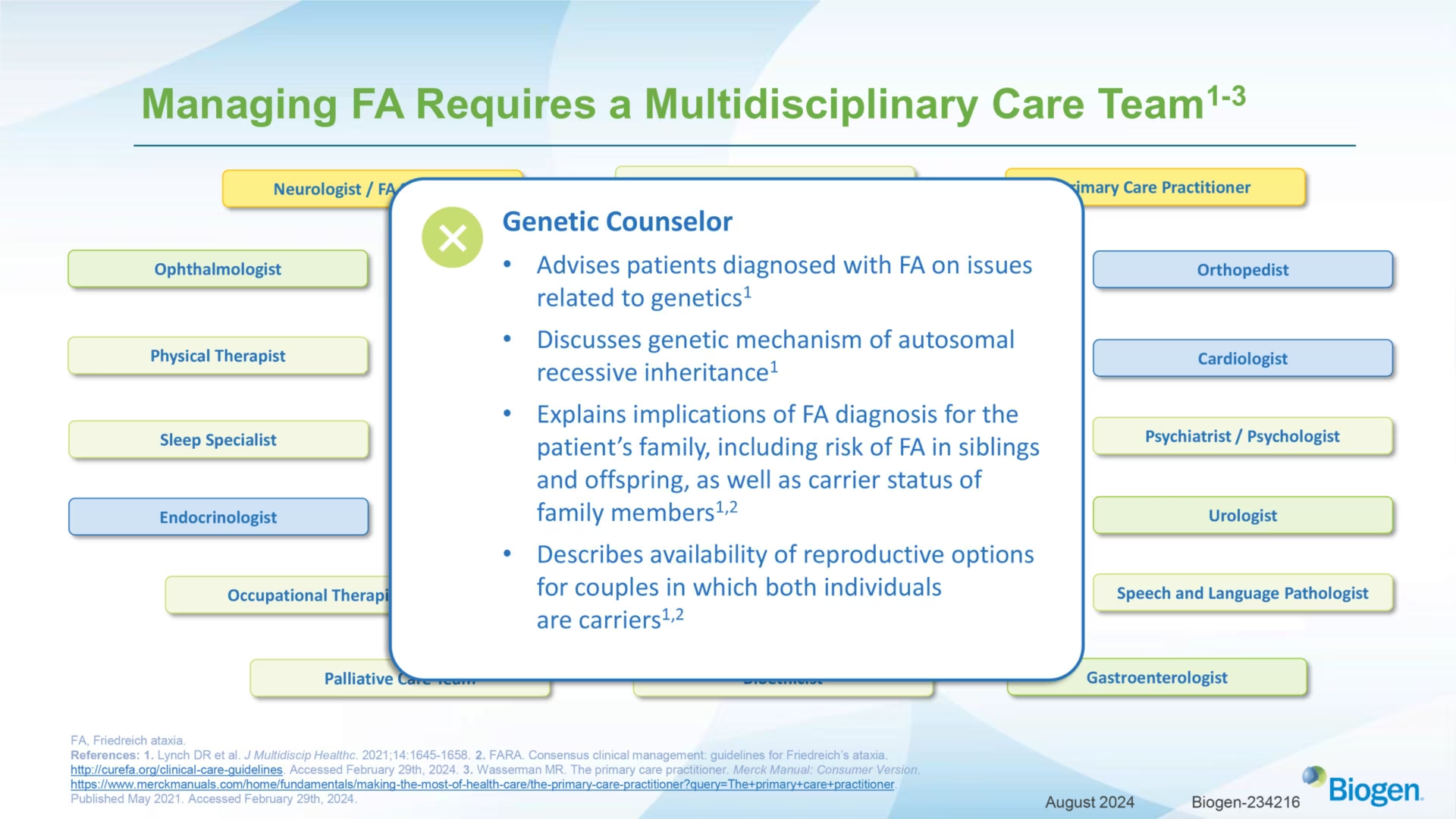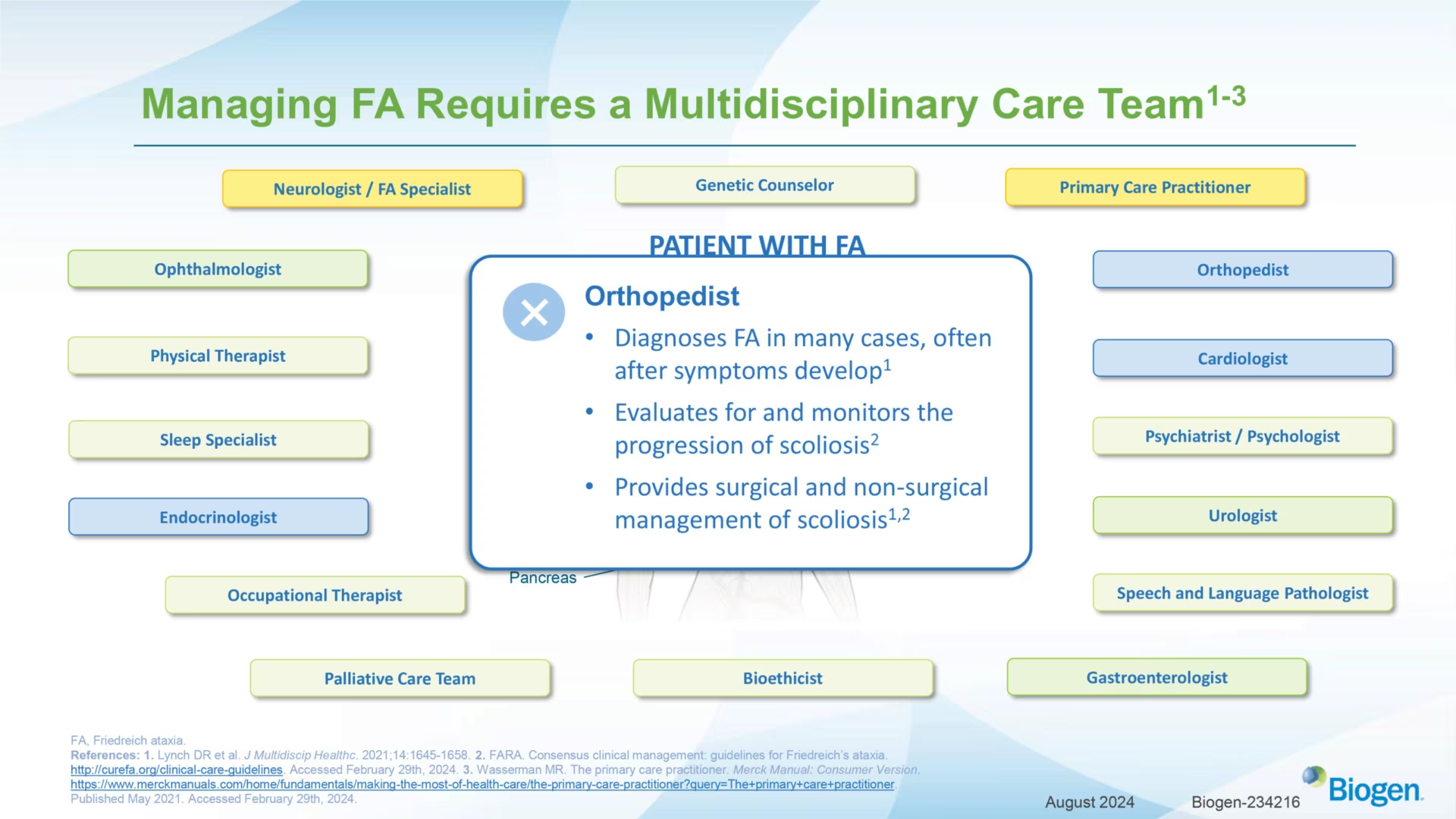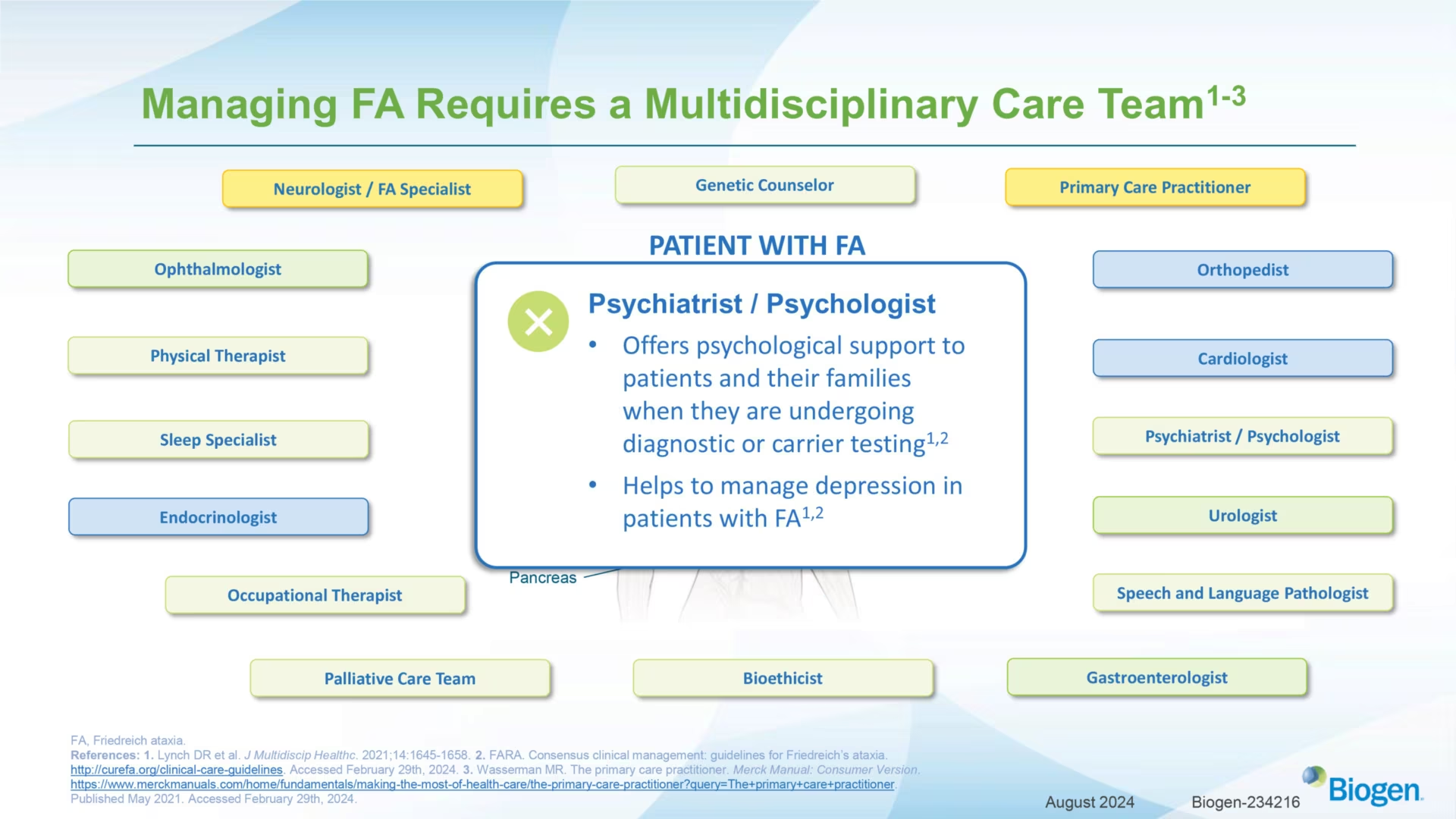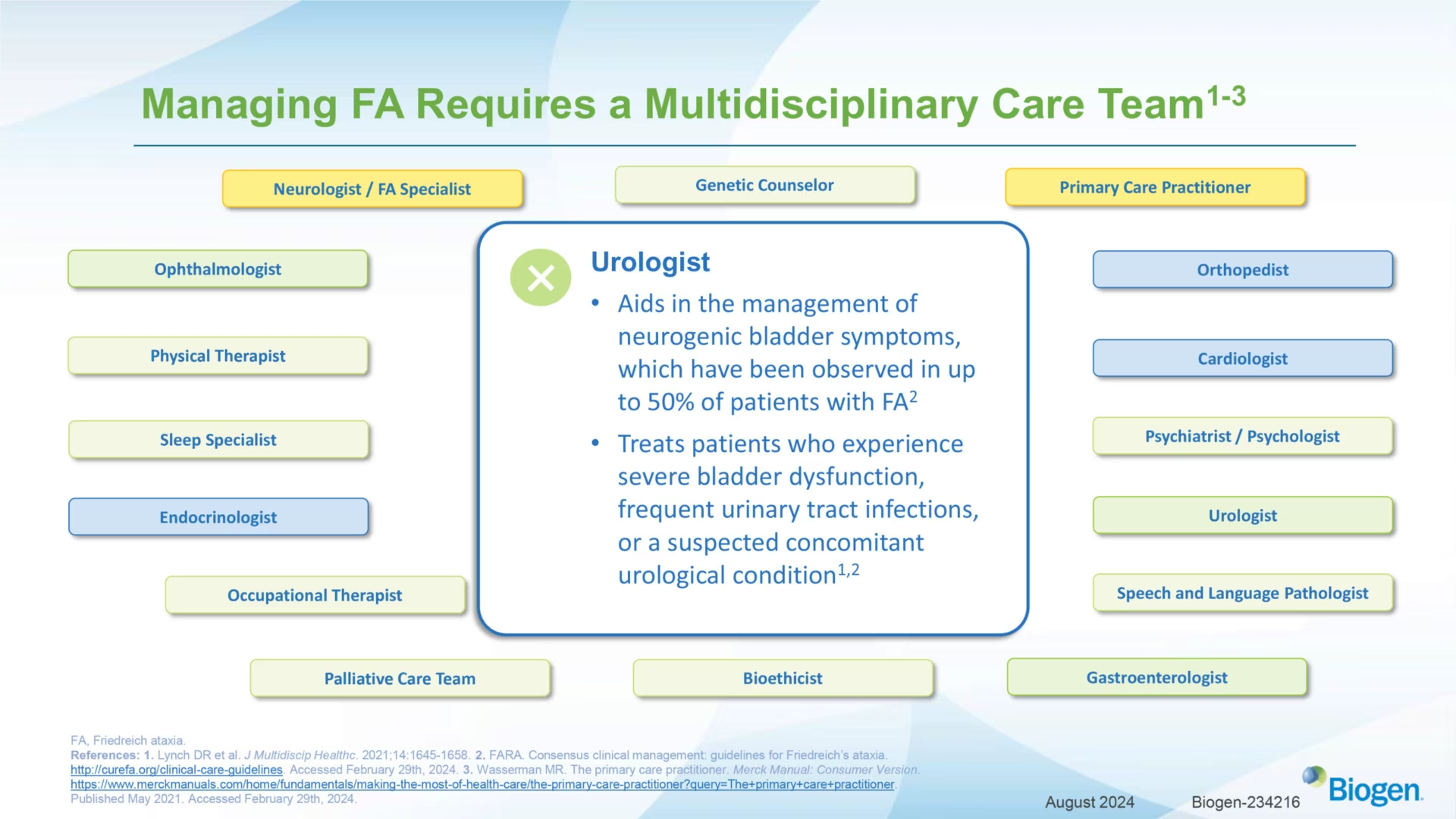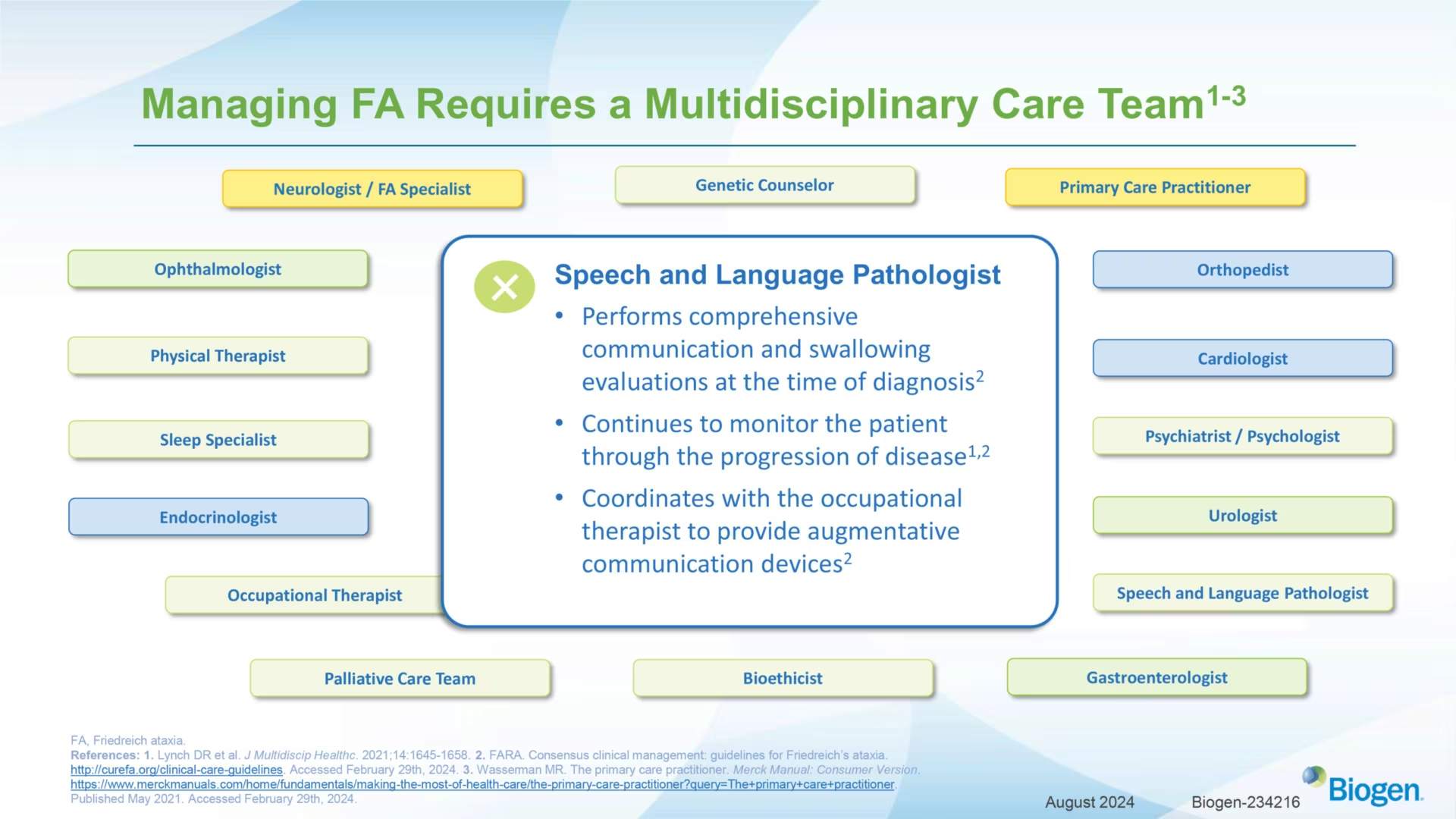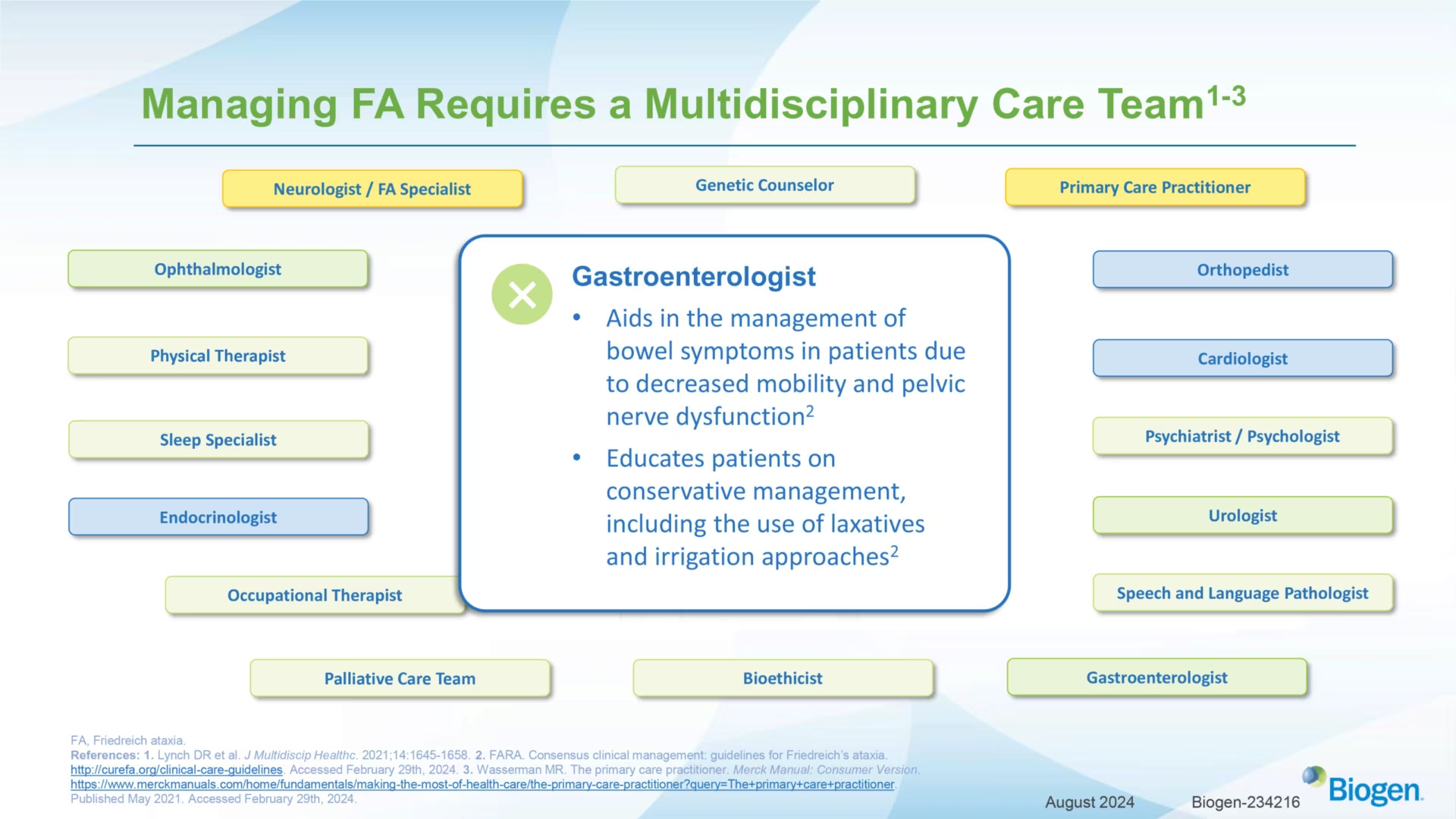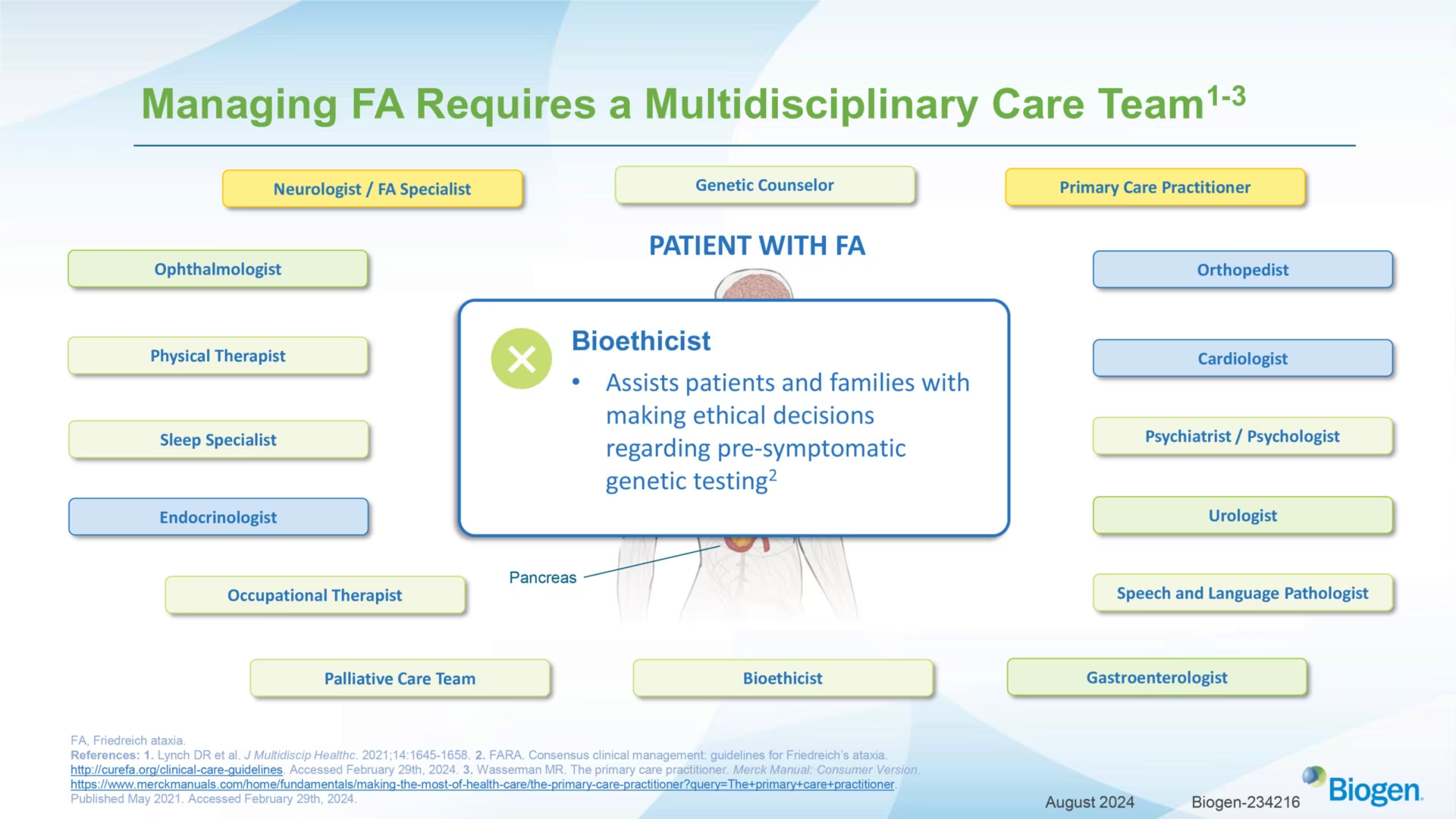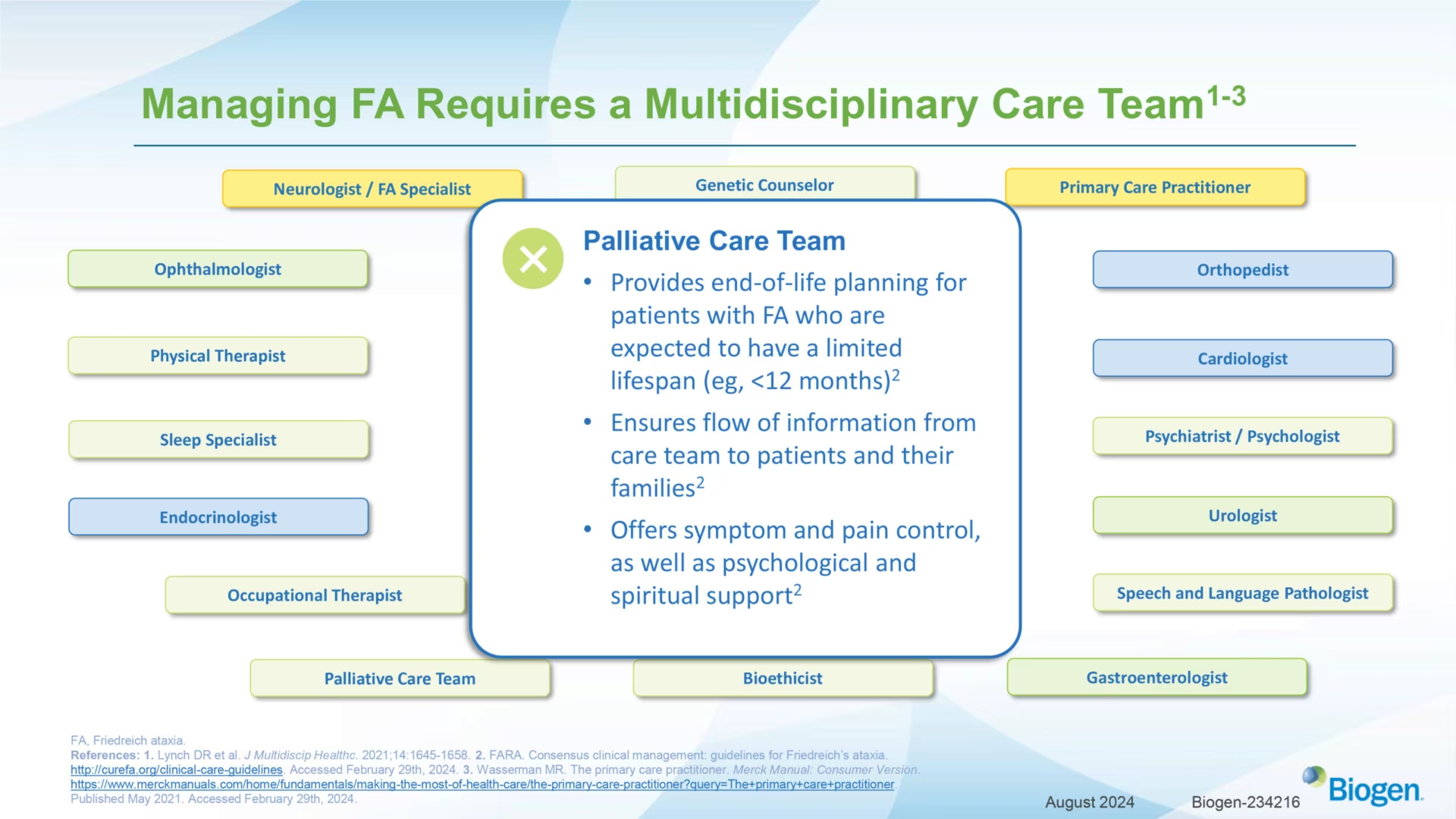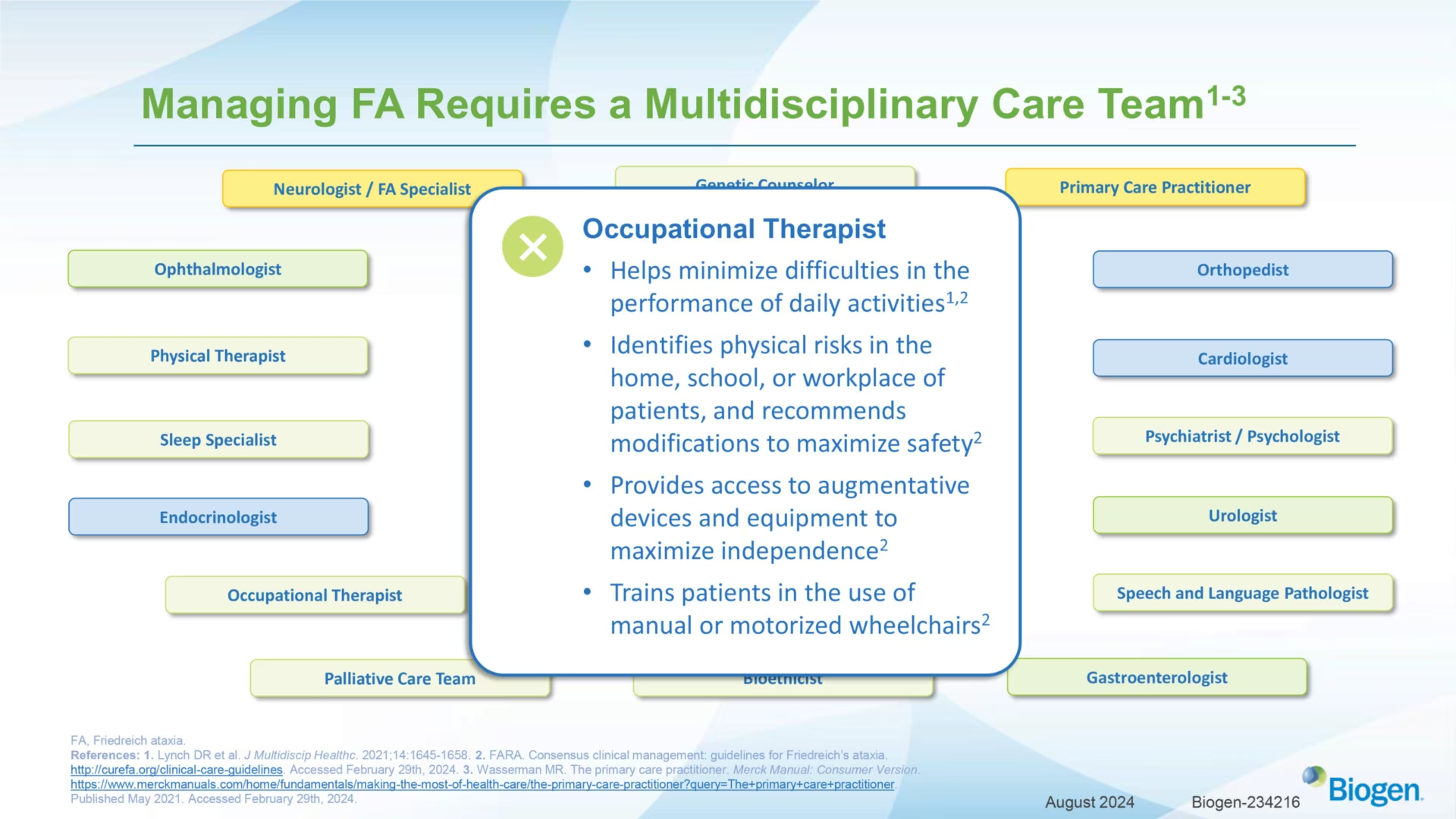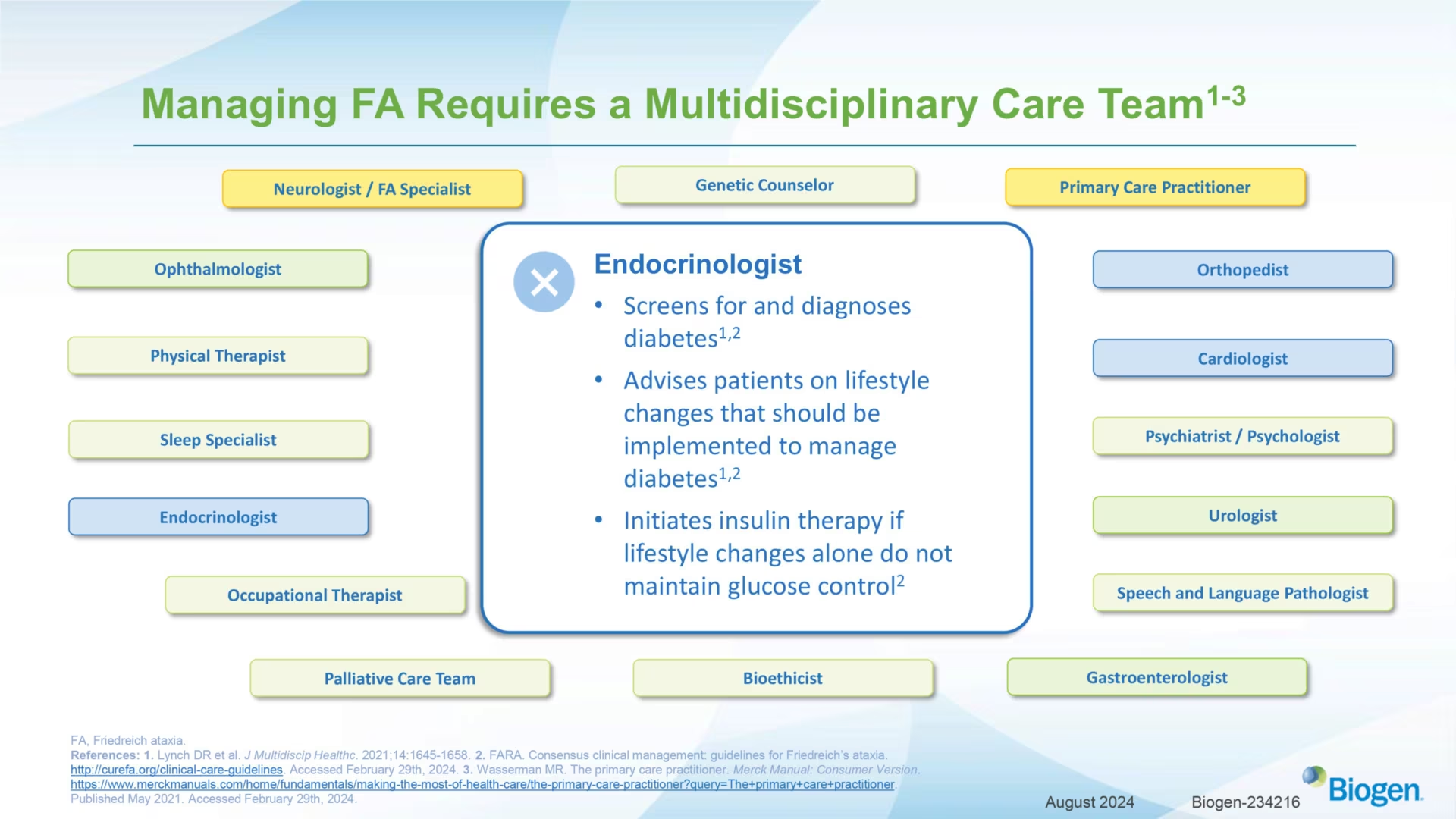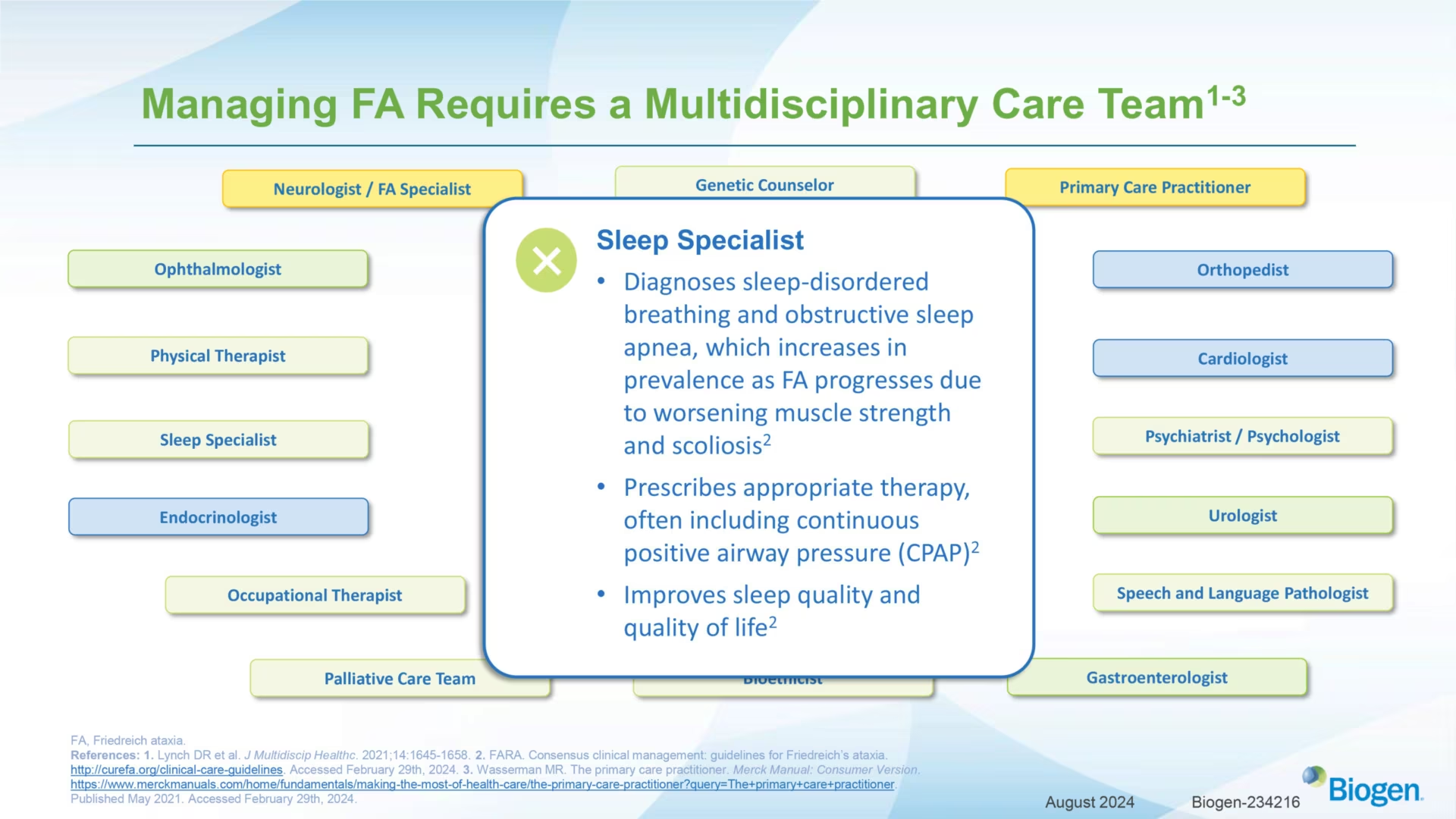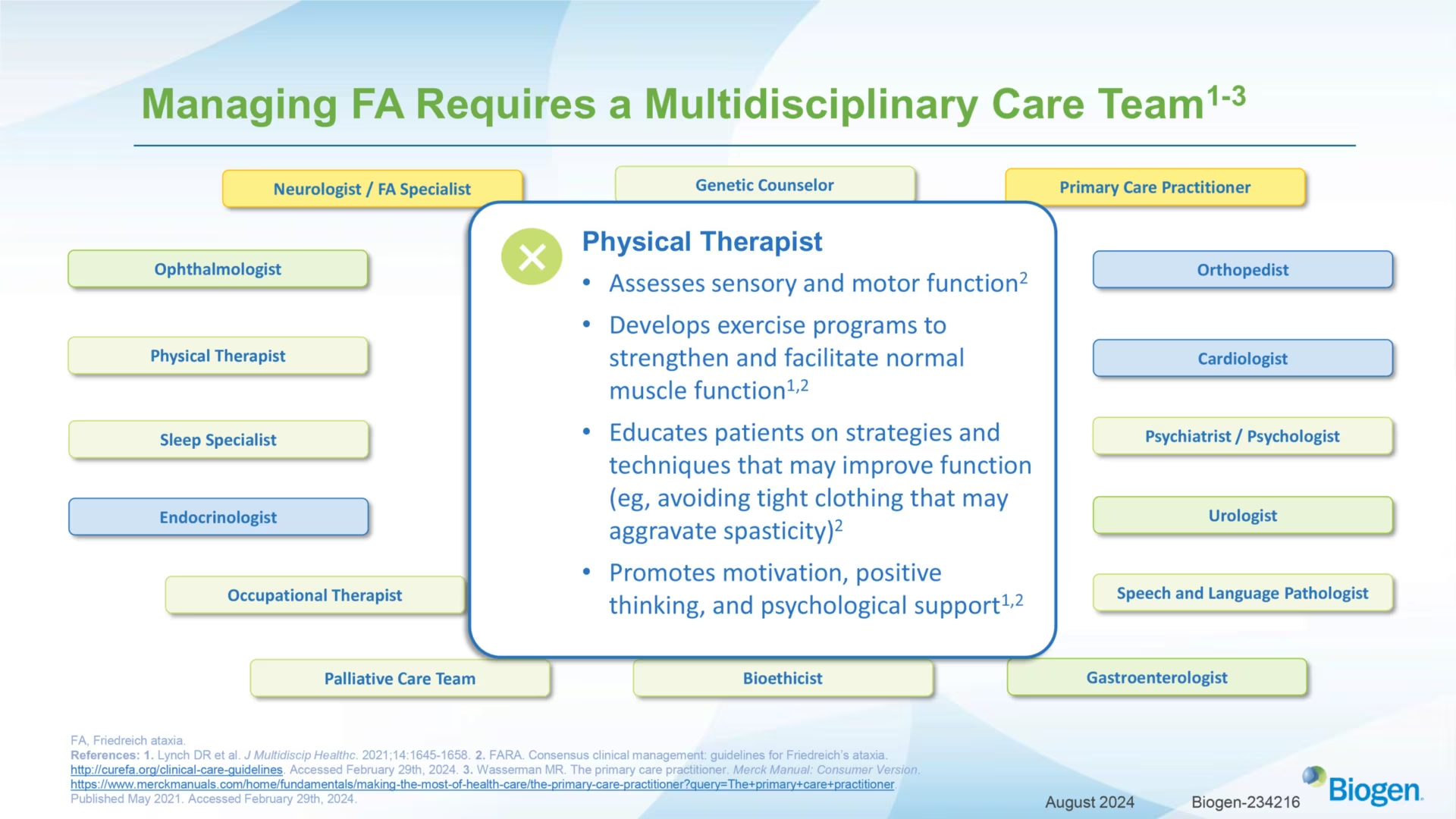touchMEETING HIGHLIGHTS
The complicated journey to Friedreich ataxia diagnosis
Learning Objectives
After watching this activity, participants should be better able to:
- Describe the key signs and symptoms of Friedreich ataxia (FA), particularly early in the disease
- Outline the underlying pathology of FA
- Discuss how to make a differential diagnosis for Friedreich ataxia to avoid diagnostic delays
Overview
The progressive neurological condition, Friedreich ataxia (FA) is the most common form of inherited ataxia. Generally, the disease presents around 5–15 years of age, but diagnostic delays are common, contributing to poor disease prognosis. Early recognition and diagnosis are important to ensure prompt referral to specialist centers and access to management strategies. In this activity, a leading expert in FA describes key signs and symptoms of the disease and the how to make an early differential diagnosis.

A downloadable pdf version of the Multidisciplinary Care Infographic can be found in the Toolkit here.
A downloadable pdf version of the Multidisciplinary Care Infographic can be found in the Toolkit here.

Log into your Touch Account
Earn and track your CME credits on the go, save articles for later, and follow the latest congress coverage.
Sign up with an Email
Or use a .
This Functionality is for
Members Only
Explore the latest in medical education and stay current in your field. Create a free account to track your learning.







